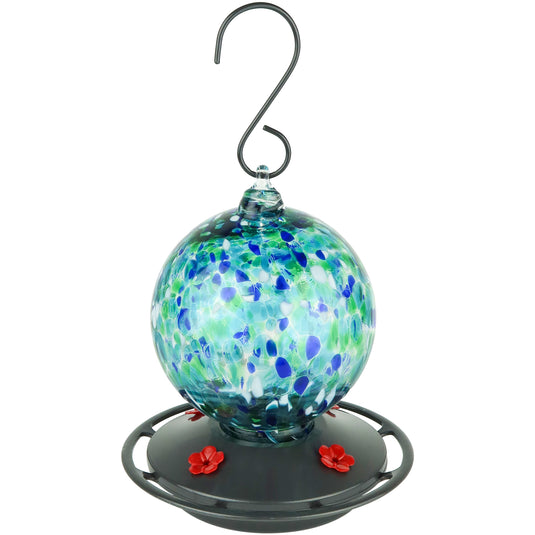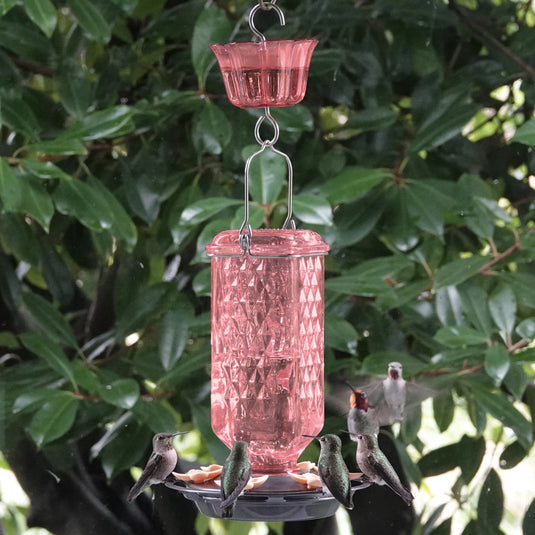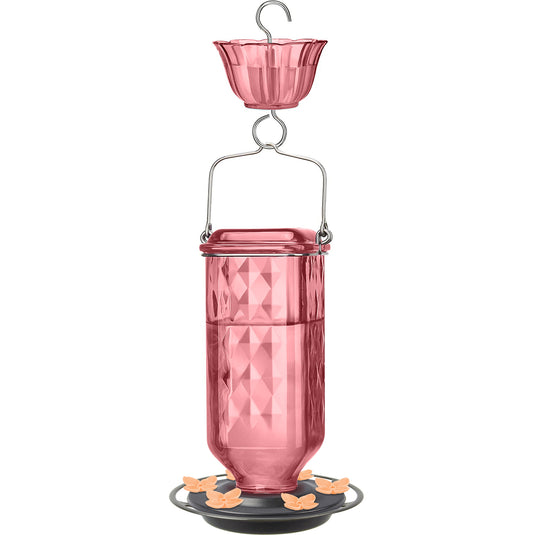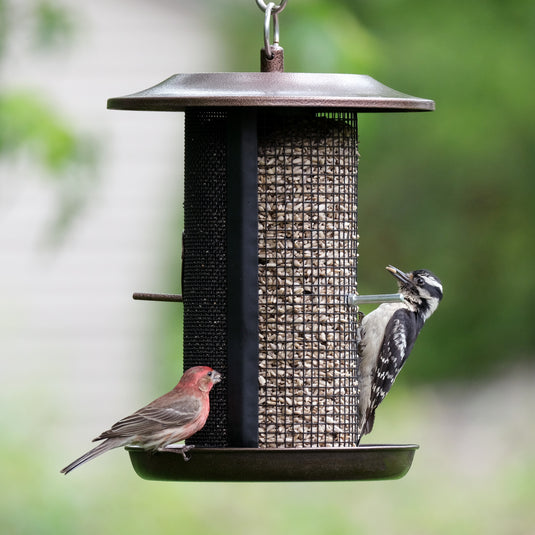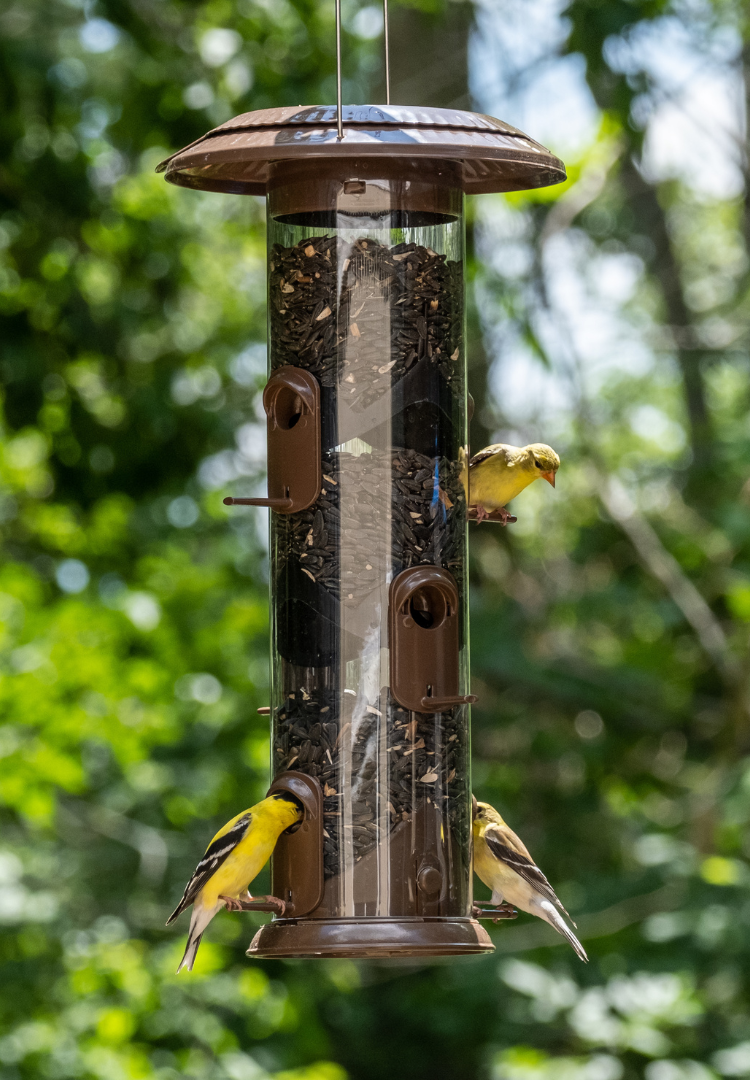Mess under your bird feeder can be a real headache. It’s unsightly, attracts unwanted critters and weeds, and can even harbor bacteria that might make your backyard birds sick. But fear not, bird lovers! There are ways to keep your feeding area cleaner and more enjoyable. Is there a magic no-mess bird feeder or miracle no-mess seed? Let's find out!

Just a heads up: While there’s no perfect solution to completely eliminate bird feeder mess, there are plenty of tricks to minimize it and make cleanup easier.
Cleaning up the mess
How often should you clean underneath your bird feeder?
First things first. How often should you clean up the mess underneath your bird feeder? That depends on how busy your feeders are! If you’re worried about nocturnal pests, a daily clean-up is best. Otherwise, a good rule of thumb is every couple of days, or whenever there’s a noticeable layer of seed. Don’t let it pile up – it could turn into a moldy, bacteria-laden mess that’s bad for birds and other wildlife who like to ground feed.
How do you clean the mess underneath your bird feeder?
Most folks use a broom or a shop vac to tidy up the fallen seed and hulls. You can toss this waste in your regular trash, or, if you’re a gardener, consider composting it (just check that the seeds compost-safe). And while you’re at it, don't forget to give your feeders a regular clean to keep everything spick-and-span!
Change up your seed type
Choose to feed one type of seed per feeder
Birds can be picky eaters, often flicking out the seeds they don't like. To keep more food off the ground, avoid seed blends and stick to a single, crowd-pleasing type like black oil sunflower seed. If you want to offer a variety of seeds, use separate feeders for each type. This way, birds can pick their favorite without tossing unwanted seeds onto the ground, keeping your feeding area tidier! If leftover shells are still an issue, look for no-mess or no-waste seed options.
Types of no-mess or no-waste bird seed
While there’s no such thing as a completely mess-free seed, some options are tidier:
- Hulled or shelled seeds: These come without the messy shells but are often more expensive.
- Plain suet or seed cakes: These tend to hold together well, leaving less debris behind.
For a complete list of bird seed and the birds they attract, see our bird seed guide.
Keep the mess off the ground
Use a seed catcher
A seed catcher is an accessory that attaches to the bottom of your bird feeder, catching seeds and hulls that fall. They let birds snack on the dropped seeds and reduce waste. Look for one with drainage holes to keep the seeds dry. While they won’t catch everything, they do make a noticeable difference.
Use a platform or tray feeder
Platform or tray feeders have a wide, flat surface that makes it easy for birds to eat without making too much mess. They tend to catch more discarded seeds and hulls, though some will still escape.
Create a sunflower garden
Why not turn mess into beauty? Place a garden box or dedicate some space under your feeder to catch sunflower seeds and grow a sunflower garden. Birds love munching on sunflowers, and you’ll have a lovely garden feature year-round.

Make it easier to clean
Put pavers underneath
If your feeders are over grass or mulch, cleanup can be tough. Installing pavers underneath your bird feeder creates a solid surface that’s easy to sweep or vacuum.
By giving these strategies a try, you can keep the area under your bird feeder cleaner and more enjoyable for both you and your birds.







